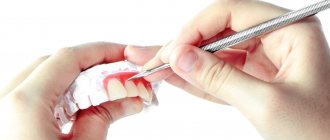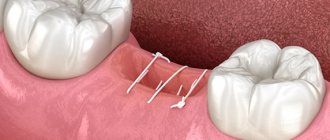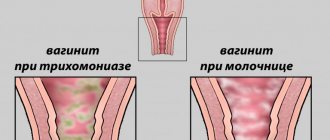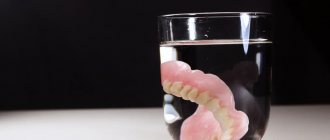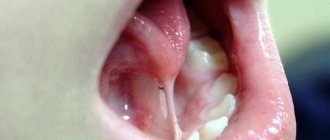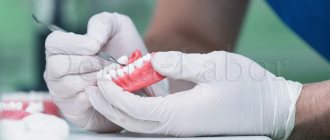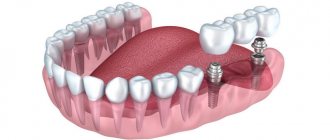Gingivoplasty is a type of surgical intervention with which a dental surgeon gives the gums an aesthetic appearance. The operation allows not only to improve the structure of periodontal tissues, but also to prevent the development of dangerous pathologies. Positive reviews from patients indicate that the procedure is truly effective, which is why it is in great demand.
Our specialists use only licensed equipment and perform operations to correct the gum contour of any complexity. If you need high-quality gingivoplasty in Moscow, contact the Mitino Dental Center.
Gingivoplasty - what is it?
Gingivoplasty is one of the types of surgical interventions in dentistry. The operation consists of eliminating pathological changes, as well as congenital defects of the gums in order to restore its aesthetic and functional state. To achieve results, the surgeon performs different types of manipulations:
- removal of hyperplastic tissue;
- extension of soft tissue in areas of recession;
- alignment of the gum contour;
- elimination of defects of the frenulum of the lips and tongue.
Gum plastic surgery can be performed using the classical method using a scalpel or using laser technology. The duration of the recovery period is 1-2 weeks.
Possible complications
Negative consequences after gum surgery rarely occur. The most common:
- Necrosis of flaps that were subjected to correction. Treatment consists of reducing the inflammatory process with antiseptic drugs. Revision gingivoplasty is also performed.
- Increased sensitivity of tooth enamel. Fluoridation and strengthening of enamel is recommended.
Possible reasons are medical errors, incorrect technique for performing the procedure, or the patient ignoring the doctor’s recommendations during the rehabilitation period.
Advantages and disadvantages of the procedure
Gingivoplasty can solve many gum problems and stop the development of serious diseases. But, despite numerous advantages, the technique also has negative sides.
| Advantages | Flaws |
|
|
Indications
Gingivoplasty refers to aesthetic surgeries performed at the request of the patient for cosmetic purposes. But in a number of clinical situations, gum surgery is prescribed by a doctor for medicinal purposes. Main indications:
- inflammatory periodontal diseases, accompanied by the formation of periodontal pockets (periodontitis, hypertrophic gingivitis);
- gum pathologies, in which gum atrophy is observed (periodontal disease, fibromatosis, benign tumor-like neoplasms);
- gum augmentation during implantation to prevent rejection of the artificial root;
- hypertrophy of soft periodontal tissues;
- congenital frenulum defects;
- traumatic damage to the gums;
- age-related dystrophic changes in the gums;
- abnormalities in the development of the gingival margin (“gummy smile”, crooked contour).
Cost of treatment
Our clinic performs gingivoplasty for any indication and level of complexity. The price is influenced by the area of the corrected area, the need to cleanse periodontal pockets and their depth, the method of anesthesia, and the drugs used. If it is necessary to build up the alveolar part of the bone and perform treatment under sedation, the price will be higher.
We employ doctors with extensive clinical experience. The clinic is equipped with modern equipment. We use only effective and safe drugs. Prices are agreed with the patient before the start of the procedures.
Contraindications
Gingivoplasty is an invasive procedure, so it cannot be performed in certain conditions:
- hemostasis disorders;
- severe somatic diseases;
- history of uncompensated diabetes mellitus;
- neoplastic processes;
- significant malocclusion;
- sensitization to drugs used during manipulation;
- active inflammation in the oral cavity;
- metabolic disorders;
- immunosuppressive conditions;
- acute respiratory diseases.
Step-by-step description of gingivoplasty
Gingivoplasty is performed on an outpatient basis in a dental operating room by a periodontist surgeon. A mandatory step before surgery is diagnostics, including:
- Gum plastic surgery after implantation
- blood testing (general clinical blood test with leukocyte formula, determination of hemoglobin concentration, coagulogram);
- ELISA for infections (HIV, syphilis, hepatitis);
- orthopantogram;
- ECG;
- consultation with narrow specialists (if necessary).
Before surgery, the patient must visit a dental hygienist and therapist (to sanitize the oral cavity). A few days before surgery, you should not take alcohol or blood thinners.
The surgical protocol depends on the patient's diagnosis. General scheme of gingivoplasty:
- Anesthesia. It is carried out with local anesthetic drugs. General anesthesia is rarely used.
- Disinfection of the surgical field.
- Excision of mucous membranes, formation of a flap.
- Carrying out the intervention in accordance with the chosen technology (flap surgery, gingivectomy, curettage, bone grafting, etc.).
- Treating the wound surface with medications.
- Aligning the edges of the wound, suturing.
A periodontal bandage is fixed over the sutures, which is removed only after 2-3 days. The duration of the manipulation is 1-1.5 hours. On days 5-7 after gingivoplasty, the patient is invited for a follow-up examination. The stitches are removed on the 10th day.
Gingivoplasty also includes surgery to remove excess tissue.
With the development of gingival hypertrophy, when the gum grows on the crown of the tooth and covers it, tissue excision techniques are used. For this purpose, microsurgical scalpels are used; they allow you to remove excess tissue very precisely, accurately and almost painlessly. However, the operation is always performed under local anesthesia, which creates comfort for the patient. After such manipulation, no stitches are required, the wound heals quickly, and the gums take on a healthy appearance.
All manipulations are performed under high magnification. The doctor uses a microscope or binoculars. This makes it possible to perform the work very accurately and achieve excellent results. In addition to equipment for modeling the gum contour, special microsurgical scalpels and ultra-thin threads are used, which are completely invisible in the healing area and do not create more trauma.
Gingivoplasty after implantation
Formation of gums after implantation of a titanium root is considered a mandatory procedure if its installation was carried out in place of a long-missing tooth. Gum recession in the implant area can lead to its loss or the addition of an infectious process.
To correct gum deficiency, patch technology is used. The autograft can be taken from the palate, cheek, and other areas of the oral mucosa. Gingivoplasty can be performed both during and after implantation.
What plastic techniques do dentists use?
For all techniques aimed at creating an aesthetic mucous membrane, there is a single name - gingivoplasty. All techniques are divided into two categories: performed as the final stage of a flap operation or as an independent intervention on healed gums. There are several types of gingivoplasty.
1. In the process of gum treatment, after curettage (professional cleaning of deep periodontal pockets), there is a need for gingivectomy to restore the aesthetics of the dentition.
- At the same time, the surgeon cuts the mucosa horizontally, stepping back from the edge by a few millimeters;
- removes a thin damaged strip of exfoliated gum tissue that does not fit tightly to the surface of the tooth;
- pulls the mucous membrane down and applies sutures, placing them in the spaces between the teeth.
2. A technique with the opposite purpose is called vestibuloplasty and is used in the treatment of gum diseases that have caused their recession and exposure of tooth roots. To restore the lost volume and healthy physiological appearance of the gums, different types of surgical intervention can be used.
- In case of a single defect in the periodontal pocket, two pairs of incisions are made, horizontally and vertically, and the flap of tissue formed in the center is used to apply a “patch” to the exposed tooth root.
- In case of large-scale recession, the donor tissue necessary for transplantation is obtained from other areas (most often from the soft palate) and, after applying it to the affected area, sutures are applied.
3. When implanting teeth, plastic surgery is performed after engraftment of the titanium root on the already healed gum. Through the incision, the surgeon screws a special cylinder into the implant, the so-called. gum former. Equipped with a screw, the former makes a neat hole in the gum tissue, creating an aesthetic edge.
4. The need for excision of part of the gingival tissue also arises with difficult eruption of third molars or wisdom teeth, accompanied by inflammation and the formation of a “hood”.
Laser gingivoplasty
Most plastic surgeries in modern dentistry are performed using laser technologies. Instead of a classic scalpel, the surgeon uses a laser knife. Interventions carried out using this method have a number of advantages:
- Prevent the development of bleeding. The moment of incision is accompanied by simultaneous coagulation of tissues and blood vessels. The maximum blood loss during laser gingivoplasty is about 5 ml.
- Prevents infection from entering the wound. The operation is carried out without contact, so the introduction of pathogenic flora into the incision area is excluded.
- Provide maximum precision in flap excision. The absence of a human factor makes it possible to carry out cuts strictly according to the intended pattern.
- Guaranteed safety. The use of a laser prevents mechanical damage to nearby tissues.
The laser technique is less painful compared to conventional gingivoplasty. Wound healing occurs faster and less time is required for rehabilitation.
Attention!
Progressive recession of the gum tissue can lead to tooth loss , as a result of which it will be necessary to replace it with prosthetics, which will cost much more than the cost of gum surgery.
If you need help with issues related to the condition of your gums, contact our dental clinic.
Date of publication: September 20, 2020 Last update: September 22, 2022 © 2020 Professorial Dentistry “22 Century”. All rights reserved.
Features of postoperative care
The condition after gingivoplasty depends on the method of surgery performed, the volume of intervention, and the individual characteristics of the patient’s body. In the first 48 hours, hyperemia, swelling, and soreness of the gums may be observed.
- What is keratometry and how is it performed?
Minor bleeding is not a sign of pathology. If warning symptoms do not go away within 4-5 days, you should report them to your doctor.
The following recommendations will help speed up recovery:
- baths with an antiseptic solution should be performed every 3 hours (1-2 days after gingivoplasty);
- follow a special diet that excludes spicy, sour foods (the menu includes only pureed, soft dishes);
- During the rehabilitation period, completely eliminate alcohol and smoking;
- Perform oral hygiene procedures with care so as not to damage the sutures;
- use medications prescribed by the dentist (anti-inflammatory, analgesics, antibiotics);
- Visit the doctor for a follow-up examination at the appointed time.
How long does it take for gums to heal after surgery?
It may take 12-15 days for the gums to fully recover. Physiotherapeutic procedures will help speed up the process. They improve lymphatic drainage, reduce swelling, stimulate microcirculation, and accelerate tissue regeneration by normalizing trophism and gas exchange. For these purposes, the following physical methods are used:
- DENS (dynamic electrical neurostimulation);
- UHF;
- laser treatment;
- magnetotherapy.
If the surgeon’s recommendations are not followed, undesirable complications may occur:
- suture dehiscence, bleeding;
- addition of infection;
- tissue swelling;
- exacerbation of periodontitis;
- sepsis, etc.
Recovery period
To avoid complications and speed up the healing process, you must strictly follow the doctor’s instructions:
- stop smoking, as nicotine constricts blood vessels, which prevents tissue regeneration;
- include less sour and sweet foods in the diet, do not eat cold, hot, rough foods;
- brush your teeth with a soft brush with extreme caution (brushing is prohibited for the first 3 days);
- regularly rinse your mouth with antiseptics;
- exclude active physical activity and overheating of the body.
The rules must be followed for at least two weeks.
Photos before and after
Negative dynamics after gingivoplasty are observed in no more than 3% of those operated on. Most cases have a positive prognosis. We offer a selection of photographs taken before and after gingivoplasty.
